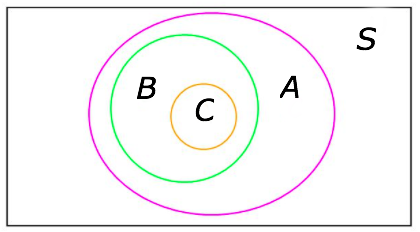While tutoring today a student asked me about the following identity
.
One way to prove it is to count the number of possible triples of sets with
. This can be done in two ways. First, if
contain
elements respectively then the number of such triples clearly equals the left-hand side of
. On the other hand, since each element of
must belong to one of the four disjoint regions in the picture below

the number of such triples equals precisely .
An algebraic proof can be obtained by repeated use of the binomial theorem:
.
Similarly, one obtains the more general identity
.
This also follows from the multinomial theorem since the left-hand side equals
.


